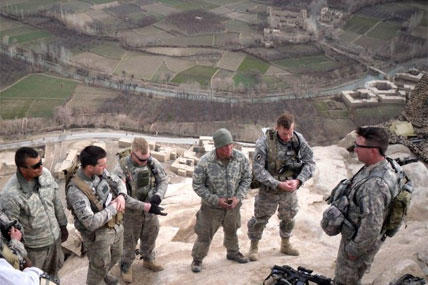Army leaders have planned for its force strength to shrink with the onset of budget cuts and the end of combat operations in Afghanistan, but uncertainty remains whether the Army will have to dip under 490,000 active duty soldiers should sequestration cuts go into effect on March 1.
As senior leaders and planners meet this week at the Association of the U.S. Army's Winter Symposium in Fort Lauderdale, Fla., there will likely be hand wringing over how the Army could cut up to 200,000 soldiers from its total force.
The service is already to set to shrink its total force by 89,000 by 2017, finishing at 490,000 in the active force, 350,000 in the National Guard and 205,000 in the Reserves.
Army Chief of Staff Gen. Raymond Odierno told lawmakers at a Feb. 12 Senate hearing that the service will have to reduce the force by at least another 100,000 in that same time window if the defense spending cuts under sequestration occur March 1.
Under sequestration, the Pentagon would have to absorb $46 billion worth of cuts across all the services. As it stands now, the Army's share of that would mean about $18 billion less in operations and maintenance funds over the next year.
The Army, like the rest of the services, is also operating under a continuing resolution which puts the defense budget at 2012 spending levels.
Additional cuts would gut training and hinder the service's efforts to reset thousands of vehicles and weapons returning from Iraq and Afghanistan. Cutting tens of thousands of additional personnel would likely delay the Army's plans to restructure its brigade combat teams, Army officials said.
For the past two years, the Army's senior leadership has been intensely focused on mapping out how to reorganize its BCTs by 2017. Part of the discussion has centered on shuffling and trimming units enough to add a third maneuver battalion to each BCT – a high priority of commanders returning from combat deployments.
Adding a third battalion will provide flexibility to adapt to hybrid threats such as a complex, high-end war in Korea down to a training mission in Africa, Army officials maintain. This new brigade model would be designed to allow commanders to adapt to a changing battlefield.
The Army isn't likely to abandon the endeavor, but sequestration will surely delay it, planners maintain. It's also unclear how sequestration will affect the Army's plan to create regionally-aligned BCTs. Currently the plan is to have at least two regionally-aligned BCTs, one in U.S. Africa Command and another added to U.S. Pacific Command, by 2014.
Planned force structure changes will have to compete against modernization. Many senior leaders still remember how the cutbacks to procurement in the 1990s left many units inadequately equipped for the invasion of Iraq in 2003.
"We made risk decisions that we thought were appropriate but then come to find out that those support units really did need ring mounts and crew served weapons," said one Army modernization official, who preferred to remain unnamed for this post. "You can make a case that a smaller force has to be more modernized."































